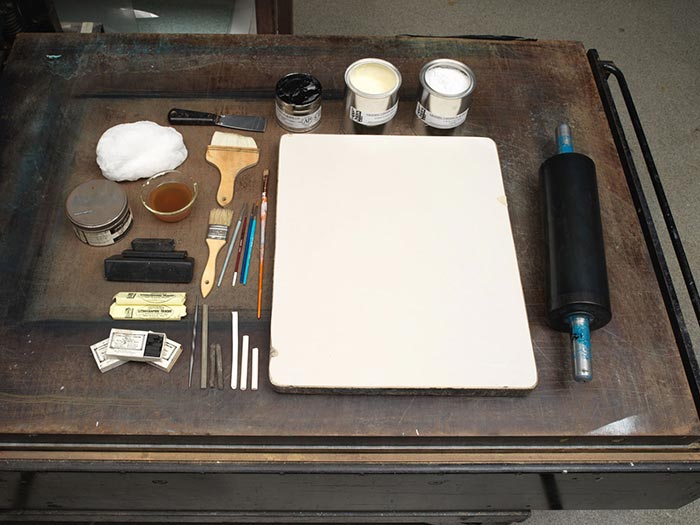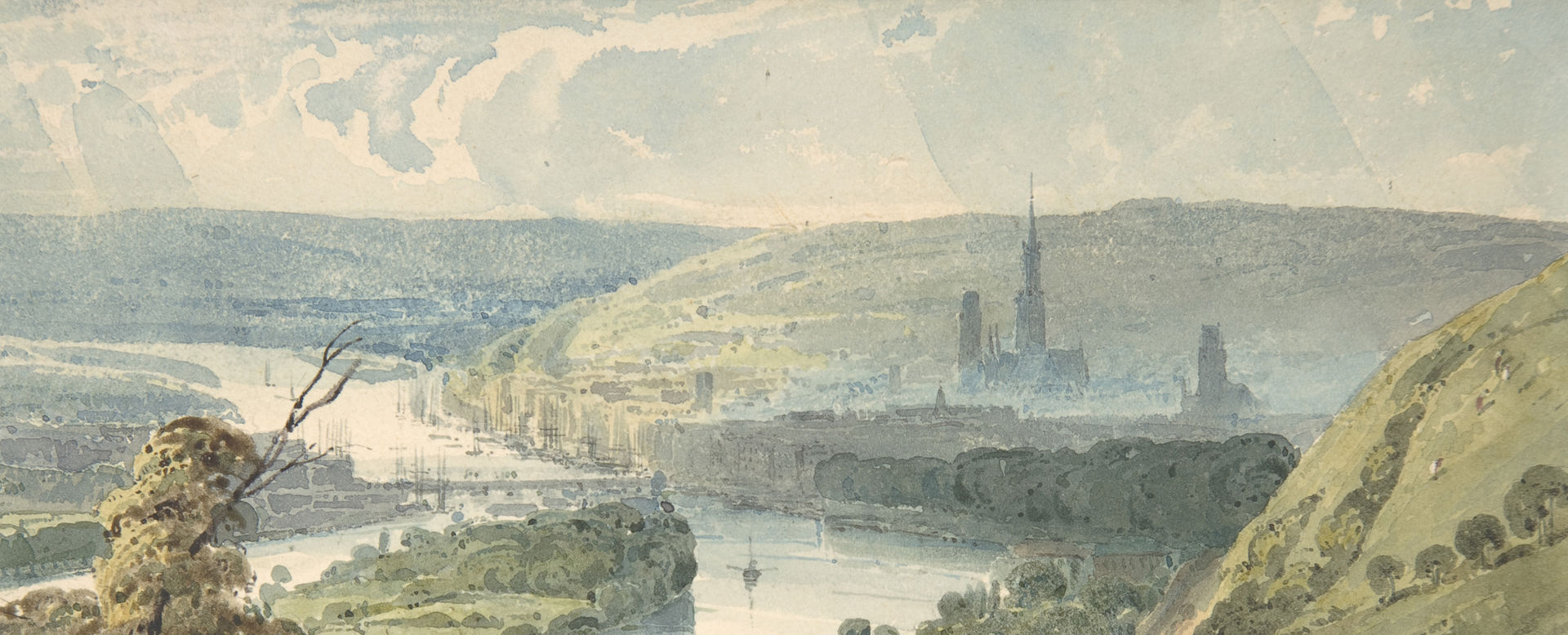A Sharpshooter: With a Bulge on the Rifle
Thomas B. Worth American
Publisher Currier & Ives American
Not on view
The late nineteenth-century Darktown prints by Currier & Ives depict racist stereotypes that are offensive and disturbing. The Metropolitan Museum of Art preserves such works to shed light on their historical context and to enable the study and evaluation of racism.
In this print, a Black (African-American) man in military uniform (red jacket, blue pants with yellow stripe down the side, and a blue military cap adorned with a large red and yellow feather ornament) lies upon a bare mattress, while also leaning against a large bulging, rolled-up mattress. In this position, he supports the end of his rifle between his toes as he looks through a long telescope (attached to his rifle) to aid his aim at the target, which is situated beyond the right edge of the image (i.e. the target is not depicted). He is unaware that --at the far left --a Black boy (dressed in a red shirt and yellow cap) is pouring a liquid from a (booze?) bottle into one of his boots. In the lower right foreground, a sleeping dog is curled up on the grass. In the center background, a Black woman, wearing a dark pink-colored dress and a flowery hat, is seated beneath a pale blue canopy as she uses her telescope to look at the far away target. A mountain range is in the distant background.The print's title is imprinted in the bottom margin.
Nathaniel Currier, whose successful New York-based lithography firm began in 1835, produced thousands of prints in various sizes that together create a vivid panorama of mid-to-late nineteenth century American life and its history. People eagerly acquired such lithographs featuring picturesque scenery, rural and city views, ships, railroads, portraits, hunting and fishing scenes, domestic life and numerous other subjects, as an inexpensive way to decorate their homes or business establishments. As the firm expanded, Nathaniel included his younger brother Charles in the business. In 1857, James Merritt Ives (the firm's accountant since 1852 and Charles's brother-in-law) was made a business partner; subsequently renamed Currier & Ives, the firm continued until 1907. The artist of this print is Thomas Worth, a prolific nineteenth-century illustrator who excelled at drawing horses and other subjects, many of which were made into lithographs published by Currier & Ives.


